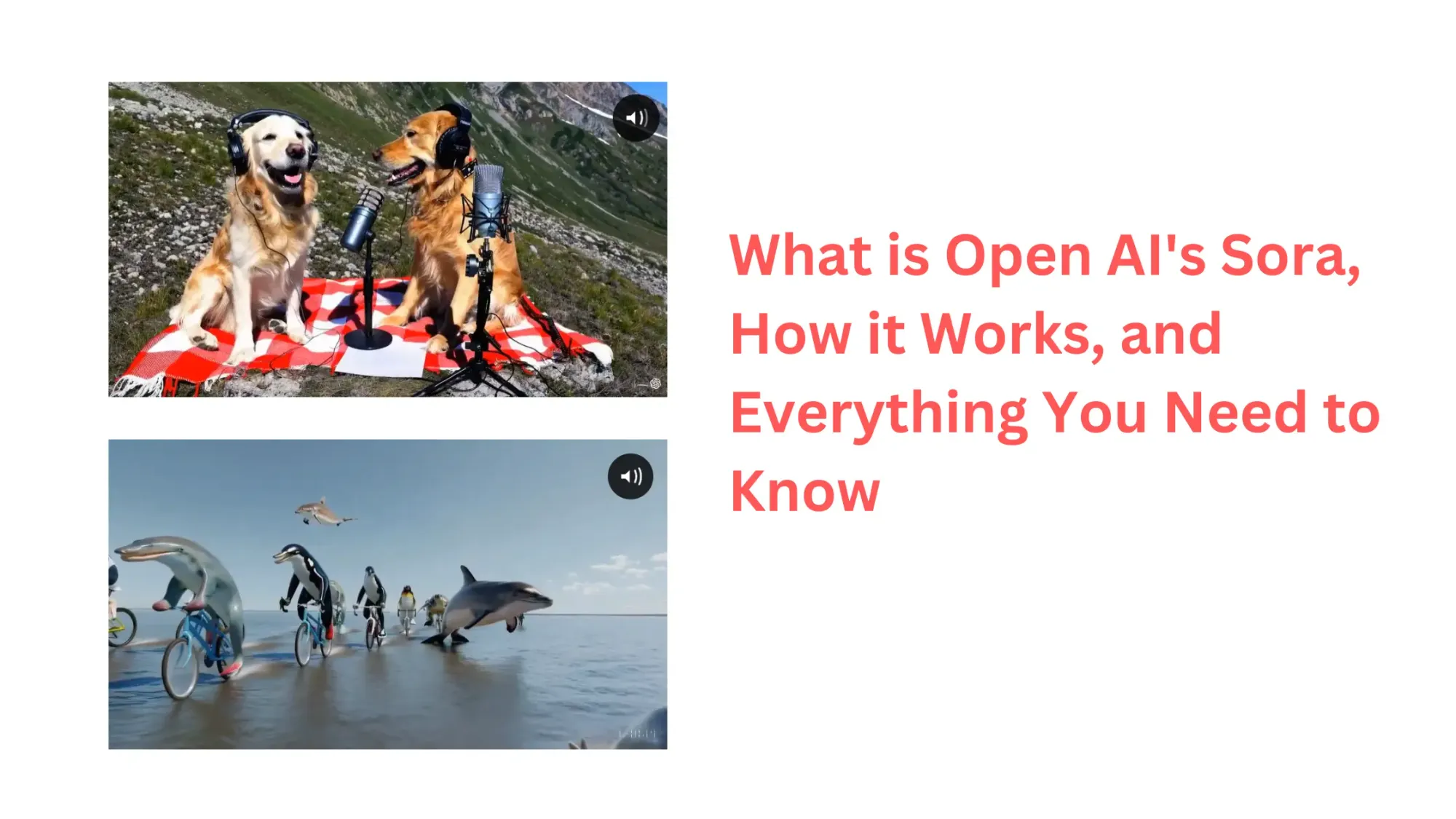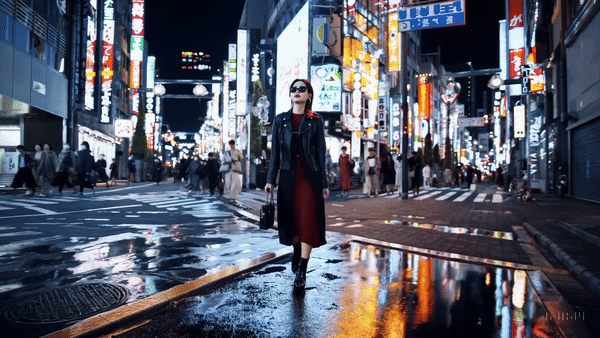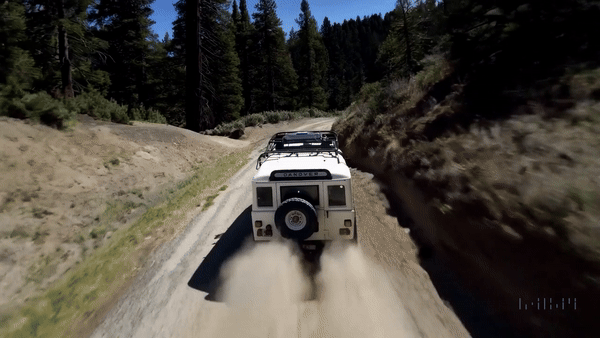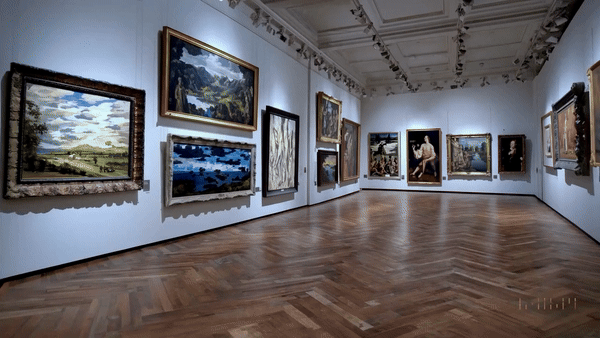What Is Open AI's Sora - Everything You Need To Know

What is OpenAI Sora?
Sora is OpenAI's generative AI model for text-to-video conversion. This implies that when you type a text prompt, it produces a video that corresponds to the description of the prompt.
Sora can turn simple text suggestions into engaging one-minute films.
Imagine telling stories with visual flair, dancing over the screen, and having your words come to life.
Sora processes and comprehends textual material using an advanced neural network architecture (the reliable transformer).
However, it doesn't end there. It also replicates the motion of the real world, which makes it a special tool for resolving interactive real-world issues.
Sora gives creative professionals like designers, filmmakers, and visual artists new and exciting options for producing captivating video content.
Examples of OpenAI Sora
Here are the best examples of videos generated with Sora:
1) Tokyo walk
Here's the Sora video example 1:
Prompt: A stylish woman walks down a Tokyo street filled with warm glowing neon and animated city signage. She wears a black leather jacket, a long red dress, and black boots, and carries a black purse. She wears sunglasses and red lipstick. She walks confidently and casually. The street is damp and reflective, creating a mirror effect of the colorful lights. Many pedestrians walk about.

2) Suv in the dust
Here's the Sora video example 2:
Prompt: The camera follows behind a white vintage SUV with a black roof rack as it speeds up a steep dirt road surrounded by pine trees on a steep mountain slope, dust kicks up from its tires, and the sunlight shines on the SUV as it speeds along the dirt road, casting a warm glow over the scene. The dirt road curves gently into the distance, with no other cars or vehicles in sight. The trees on either side of the road are redwoods, with patches of greenery scattered throughout. The car is seen from the rear following the curve with ease, making it seem as if it is on a rugged drive through the rugged terrain. The dirt road itself is surrounded by steep hills and mountains, with a clear blue sky above with wispy clouds.

3) Step Printing
Prompt: Step-printing scene of a person running, a cinematic film shot in 35mm.

How does Sora work?
Just like other text-to-image AI models such as DALL·E 3, Stable Diffusion, and Mid journey, Sora is also a diffusion model.
This means that it begins with each frame of the video consisting of static noise and then uses machine learning, to slowly change these noisy images into something that matches the description given in the prompt.
Sora can make videos up to 60 seconds long.
Sora operates on an innovative method that translates visual information into a format that is easy to understand and manipulate, similar to how textual data is tokenized for AI processing in text-based applications.
This transformative process involves compressing video data into more manageable segments or patches, serving as modular elements that Sora can rearrange to produce new videos.
Sora achieves its functionalities by combining deep learning, natural language processing, and computer vision.
Deep learning enables it to comprehend and generate intricate patterns within the data, while natural language processing interprets textual prompts to generate videos.
Additionally, computer vision empowers Sora to accurately understand and create visual content.
Utilizing a diffusion model, renowned for its ability to generate high-quality images and videos, Sora excels at converting noisy or incomplete data into clear, coherent video content.
Its approach diverges from CGI character creation, which demands extensive manual labor, and traditional deepfake technologies, which often lack ethical safeguards.
Instead, Sora offers a scalable and adaptable method for video content generation based on textual input, enhancing efficiency and creativity while mitigating ethical concerns.
Art Gallery Tour
Prompt: Tour of an art gallery with many beautiful works of art in different styles.

How to Access Sora?
Sora is restricted to researchers on the "red team" at this time. That is, specialists tasked with attempting to find flaws in the model.
For instance, in order for OpenAI to address the issues before making Sora available to the general public, they will attempt to provide content that includes some of the dangers mentioned in the preceding section.
A public release date for Sora has not yet been announced by OpenAI, however it is most likely scheduled for sometime in 2024.
What are the Use Cases of Sora?
Here are some ways Sora can be used:
1. Social media
You can make short videos for platforms like TikTok or Instagram.
It's good for scenes that are hard to film, like imagining Lagos in 2056.
2. Advertising and marketing
Instead of spending a lot of money on making ads or product demos, you can use Sora to create them.
For example, to promote Big Sur in California, you could use Sora to make a video with aerial views.
3. Prototyping and concept visualization
People like filmmakers and designers can use Sora to show their ideas quickly.
For instance, a toy company could use it to make a video of a new pirate ship toy.
4. Synthetic data generation
Sometimes, you can't use real data for privacy or practical reasons. Instead, you can make fake data that looks real.
Sora can help with this, like making videos to train computers to see better, which is useful for things like drones detecting objects at night.
So, Sora helps make videos for social media, ads, showing ideas, and even training computers.
What are the Risks of Sora?
1. Generation of harmful content
Sora, like other text-to-image models, can create content that might be harmful or inappropriate.
This includes videos with violence, gore, sexually explicit material, derogatory depictions of groups of people, and content that promotes illegal activities.
What's considered inappropriate varies based on who's using Sora and the context in which the videos are generated.
For example, a video intended for educational purposes might accidentally turn graphic.
2. Misinformation and disinformation
One strength of Sora is its ability to create fantastical scenes, which can also be used to produce "deepfake" videos.
These are videos where real people or situations are altered to present false information.
If presented as truth, this content can spread misinformation or disinformation, especially during important events like elections.
Fake videos of politicians or adversaries can be strategically used to manipulate public opinion and sow discord.
3. Biases and stereotypes
Sora's output heavily relies on the data it was trained on.
This means that if the training data contains cultural biases or stereotypes, those biases can show up in the generated videos.
Just like biases in images can impact hiring and policing decisions, biases in Sora's videos can perpetuate harmful stereotypes and discrimination.
While Sora has great potential for creative and practical uses, it also poses risks related to generating harmful content, spreading misinformation, and perpetuating biases.
These risks need to be carefully addressed to ensure responsible and ethical use of the technology.
What are the Limitations of Sora?
Sora, the AI model from OpenAI, has some limitations. It doesn't understand how things work in the real world, like physics. So, sometimes it doesn't follow the rules of cause and effect.
For example, in a video where a basketball hoop explodes, the net magically comes back. Also, objects might move in weird ways.
In a video of wolf pups playing, they might suddenly appear, or overlap with each other.
We're not sure how reliable Sora is yet. OpenAI shows really good examples, but they might have picked the best ones.
Usually, when making pictures from text, you have to make lots of them to get one good one. We'll have to see how it works when more people use it.
Future implications of OpenAI Sora
OpenAI Sora is a new and powerful tool in the world of artificial intelligence. It can create videos from text, which opens up a lot of possibilities.
Let's talk about what this might mean for the future.
In the short term, when Sora becomes available to the public, we'll likely see people using it in various ways.
For example, social media users might make better videos with Sora, and companies might use it to showcase their products or ideas.
It could also improve how we present data and help us learn new things more easily.
However, there are also risks to consider. Sora could be used to spread fake information, and there might be legal issues with using it to make videos without permission.
We also need to think about how to regulate its use and make sure it doesn't make people lazy or too reliant on technology.
In the long term, Sora could change many industries. It might make it easier to create things like video games or personalized entertainment.
It could also blur the line between the real world and digital worlds, especially when combined with technologies like virtual reality.
1. Quick Wins in Various Areas
Social Media Enhancement: Sora can help users create better-quality videos for platforms like TikTok and LinkedIn.
Prototyping Aid: It can be used to showcase new products or architectural designs effectively.
Data Visualization: Sora can improve data storytelling by creating vivid visualizations and interactive models.
Learning Enhancement: Sora's ability to bring concepts to life can aid in creating better learning materials.
2. Potential Risks
Misinformation: There's a risk of Sora being used to spread fake news or misinformation, especially during important events like elections.
Copyright Concerns: Users need to be cautious about using Sora to create videos using copyrighted materials without proper authorization.
Regulatory Challenges: Regulating the use of Sora will be challenging and requires careful consideration to balance innovation and individual rights.
Dependence on Technology: There's a concern that people might rely too much on Sora, seeing it as a shortcut rather than a tool for enhancing creativity.
3. Competition in Generative AI
Sora's release may spur competition among various companies to develop similar or better text-to-video generation models.
This competition could lead to further innovation and refinement of generative AI technology, benefiting users in various industries.
4. Long-term Applications
Advanced Content Creation: Sora could speed up production in fields like virtual reality, video games, and entertainment by assisting in prototyping and storyboarding.
Personalized Entertainment and Education: Sora's ability to tailor content to individual preferences could revolutionize how entertainment and education are delivered.
Real-time Video Editing: It could enable real-time adaptation of video content based on audience preferences or feedback, enhancing viewer engagement.
Blurring Physical and Digital Worlds: Combined with technologies like virtual reality, Sora could create immersive digital experiences, raising questions about the distinction between the real and digital realms.
While OpenAI Sora holds great potential for positive advancements, it also presents challenges that need to be carefully addressed to ensure its responsible and beneficial use in the future.
Overall, while Sora has a lot of potential to do good, we need to be careful about how we use it and make sure it doesn't cause harm.
Conclusion
Sora is an exciting advancement in AI technology that has the potential to revolutionize how we create video content.
It offers creative professionals new tools for storytelling and visualization, opening up possibilities for social media, advertising, prototyping, and synthetic data generation.
However, along with its benefits come risks, such as the potential for generating harmful or misleading content and perpetuating biases.
It's important for developers and users alike to address these risks responsibly as Sora moves towards a wider release.
While Sora isn't available to the general public yet, its future holds promise for enhancing creativity and efficiency in video production.
Frequently Asked Questions
1. What is Sora – OpenAI's new text-to-video generator?
Sora is a new tool from OpenAI that turns written words into videos. You can write a description, and Sora will make a video based on it.
It's like telling a story, and Sora brings it to life with moving pictures.
This can be useful for making short videos for social media, ads, showing ideas, or even creating fake data for training computers.
But, there are also some risks involved, like making inappropriate content or spreading false information. So, while Sora is exciting, we need to be careful how we use it.
2. Was Sora the first artificial intelligence video model?
Sora wasn't the inaugural artificial intelligence video model, but it marked a significant advancement due to its unparalleled consistency, prolonged duration, and exceptional photorealism.
Although the videos produced by Sora have been impressive, they have only been shared by OpenAI staff on platforms like X and TikTok, with some being generated from prompts proposed by fans.
Book our demo with one of our product specialist
Book a Demo